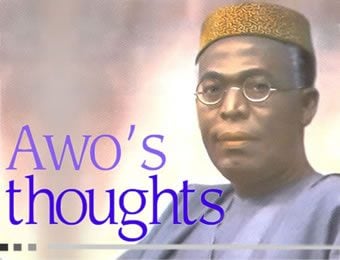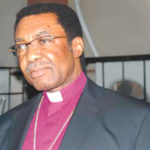The curriculum would comprise language, arts, mathematics, social studies, science, polytechnical skills, cultural arts, physical and health education, religious and moral education. For details see para. 24 (pp. 12-13) of the Taiwo Report.
Secondary or Second Level of Education Education at this level would be free only, and would not be compulsory.
There would be three types of secondary education as follows:
Secondary Grammar School
(i) This would be a 5-year course and admission would be through a competitive examination.
(ii) The curriculum would be purely academic, that is, apart from subjects like language, geography, history etc., it would include mathematics and science subjects.
(iii) Pupils would take the West African School Certificate Examination.
Secondary Commercial School
(i) This would be a five-year course and entry would be by competitive examination.
(ii) The curriculum would provide for general education with a vocational and practical bias. Subjects would include accounts, commerce, insurance, banking, shorthand and typing, rural science, mathematics, and languages.
(iii) Pupils would take the West African School Certificate Examination.
Secondary Vocational School
(i) All Primary School leavers, who are unable to enter either the Secondary Grammar or Commercial School, would be absorbed into the Secondary Vocational School for a course of 3 years’ duration.
(ii) The main objective here is to produce semi-skilled manpower for the basic industries and agriculture, as well as to offer training in different trades, e.g., concrete working, painting and decorations, cabinet making, sheet metal working, motor vehicle mechanics and driving, housekeeping, tractor mechanics, etc. It is essential that such training should be geared to the needs of the economy.
Higher or Third Level of Education
Education at the third level would be limited to free tuition and books and would consist mainly of work at institutions of higher learning which include universities, colleges of technology and colleges of education.
University Education
(i) Entry would be by competitive examination which would be open to candidates with at least Grade II W.A.S.C or its equivalent.
(ii) All courses would be preceded by a one-year preliminary course. .
(iii) It would last for a minimum duration of 4 years (including 1 year for preliminary course) leading to an honours or pass degree.
(iv) Distribution of students among different disciplines must reflect the needs of the country in all sectors.
Colleges of Technology
(i) Entry would be by competitive examination, and would be open to candidates with at least Grade II W.A.S.C with good passes in the relevant branches of Science and Mathematics.
(ii) Technical Education, which should be organised in accordance with the needs of the economy, would comprise several branches, and would be at least a 3-year course.
(iii) Teachers in these Colleges are ‘expected to be either professionals (at graduate level) in their respective skills, or products of the Colleges of Technology who have further learnt to teach their subjects.
Teacher Training
Three types are envisaged:
(i) A 2-year post-secondary grammar or post-secondary commercial course.
Graduates of this type of institution would teach in primary schools only.
(ii) A 3-year post secondary grammar or post-secondary commercial course leading to the Nigerian Certificate in Education (N.CE.) It is from among this class of graduates that headmasters and senior teachers of primary schools, and teachers in all types of secondary Schools, would be recruited.
(iii) A 4-year degree course in education in the faculties of education of universities.
Graduate teachers would teach in secondary schools and in the other 2 types of teacher-training colleges.
Comparative educational systems
At the end of the book is a chart illustrating the proposed educational system compared with those of the USSR, USA, and U.K.
Section II-Determination of the Educational Structure and Projections of School Population by Level and Type
The main approach adopted is to devise, first of all, a model for projecting school population, using mainly, data relating to Western and Lagos States, while having in mind the data which are available for the whole country. The basic assumptions and methodology made and adopted are briefly set out below.
- Primary School Population
The total population which ought to have been in primary school in Western Nigeria in 1964, on our assumptions that primary education is free and compulsory and open to children who have attained the age of 6 years, is calculated, and this is projected at an assumed 21/2% annual rate of increase in the population.
Because the 1963 population census took place early in November, the primary school population in 1964 is calculated to be equal to ninth of the children who were 5 years in 1963, plus those who were 6,7,8,9,10 years in 1963, plus 5/6 of those who were 11 years in the same year. This gives us 1,491,041.
Cross Checks
(i) The UN approach in its Report of the Conference of African States on the Development of Education in Africa -1961, is to take 60% of the population of children aged 5-14 years. With this approach, the figure derived for the primary school population in the Western Region in 1964 is equal to 1,462,000 which compares favourably” with the estimate obtained from the above computation.
(ii) In Some Trends in Education in the Western Region of Nigeria- 1955 -1965, the International Labour Organisation found that about 50% of children of primary school age in the Western Region were in school. We know that the total enrolment in 1967 was equal to 756,717.
It follows, therefore, applying the ILO finding, that 100% of children of primary school age will be equal to 1,513,434. The adjusted primary school population based on our forecast is 1,522,700 in 1967.
Wastage Rate
(i) The E.CA.’s recommendation is that the average annual wastage rate in primary schools should not be greater than 3.3 % in 1980.
(Vide UNESCO/ECA Report of the Conference of African States on the Development of Education in Africa). A free and compulsory primary school education is assumed.
(ii) Wastage rate in England and Wales ranged between 0.1 % and 0.8 % between 1960 and 1966.
(iii) Average annual wastage rates in primary schools in Western Nigeria -1955-65, as estimated in I Some Trends in Education in Western Nigeria’ published by I.L.O., were:
Among the entrants of 1959, about 8.6%
Among the entrants of 1960, about 9.2 %
Assumed Rate
A 2% per annum wastage rate from each group is assumed. For any group of primary school population in any year, this rate equals 3.3 %.
- Secondary and Third Level School Population
Factors Considered:
(i) In January, 1966, the percentage distribution of the output of primary schools among the different types of secondary schools in Southern Nigeria was:
Grammar Commercial Modern
East 19.31 % 1.79% 0.66%
West 16.73% -15.88%
Lagos 27.01 % 12.41% 2.74%
Average 21% 4.73% 6.43%
British Experience
(ii) In 1960, about a quarter of the pupils leaving primary schools went into secondary grammar or technical schools but specialised particularly in technical subjects – Vide page 19 of Commonwealth Education: Britain’s Contribution – 1961. The British distribution of enrolment in the different types of Secondary institutions in January 1965 was:
Number As % of Total
Secondary As % of Total Enrolment in the last 3 types of Sec. Schools
Modern 1,555,132 55.17% 65.94%
Grammar 718,705 25.49% 30.47%
Technical 84,587 3.00% 3.59%
Comprehensive 239,619 8.50%
All other
Secondary 221,011 7.4%
Total 2,819,054 100.00% 100.00%
This indicates that in 1965, more than 28% of school enrolment were in secondary grammar and technical schools. In fact, a good part of the 8.5% in comprehensive schools would belong to this type.
Assumed Rates
Because education in Nigeria at this level is not compulsory, it would be reasonable to assume that less than 100% of primary school leavers would attend secondary schools. A wastage rate of 20% is assumed in the transfer from the primary to the secondary level, thus 80% will be provided for at the second level of education. This 80% is distributed as follows:
To Secondary Grammar and I
Secondary Commercial Schools } 30%
To Secondary Vocational Schools } 50%
This is about the position in Britain in 1960 (except that there was no wastage). This is considered a reasonable position to start with in Nigeria.
The average percentage distribution in southern Nigeria in 1966 was about 26% for both grammar and commercial schools and was as high as 39% in Lagos in the same year.
On the basis of the rates recommended above, 20% of the output of secondary grammar cum secondary commercial schools are taken for the third level. With slight adjustments for wastage rates, these give the distribution percentages of school population as 77.7%,20.2% and 2.1 % for first, second and third level of education, respectively. These are approximated to 78%, 20% and 2%
The rates are then applied to the first-level school population to get the absolute figures for the second and third levels. While the figure for the second level seems reasonable, the figure for the third level turns out to be over 350 students per 100,000 inhabitants. A similar figure for England and Wales in 1964 was 352. For Nigeria this figure appears unduly ambitious. Looking through the rates of many other countries in the table below, a rate of 200 students per 100,000 inhabitants is chosen. With this figure, the rates of distribution of school population at the three levels turn out to be:
78.68%, 20.17% & 1.15%
To be continued






